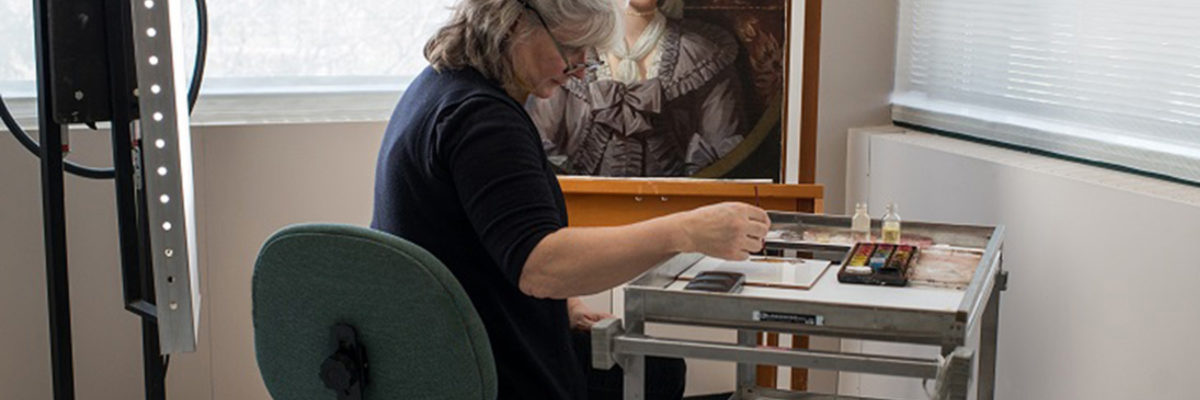
#AskAConservator: What's the most challenging thing?
CAPC is participating in #AskAConservator Day! Ashley asks: What is the most challenging thing you have had to conserve?
Intriguing question! We have two answers for you:
Fiona Graham says:
The most challenging things I’ve had to preserve are the dioramas at the Canadian Museum of Nature. We had to figure out a way to disassemble them and move them from one side of the building to the other (above an open atrium) during a renovation. These are extremely large and complex artifacts that were originally built in situ and consist of massive paintings on fibreglass shells as well as botanical specimens (foreground material) and mounted mammal specimens. There were significant technical and logistical challenges as well as the usual conservation challenges of caring for multiple materials in various stages of degradation. Hazardous materials were also present. I worked on the conservation plan but wasn’t there to carry it out; the team of conservators who completed this difficult project did a great job.
Colleen Day says:
There is a class of objects that I have found challenging: very large archaeological objects made of wood, and found in wet sites, so that they are waterlogged. Over the years these have included several hollowed out logs (40 ft long) used as a sluice through an Acadian Dike to drain salt marsh for farming, parts of a 19th century sawmill, the base of a pre-contact dugout canoe, and coffin boards eroding out of a sea cliff. The treatment of waterlogged wood is fairly straightforward. What makes large objects challenging is that waterlogged wood is both heavy and delicate, finding them is often a surprise, successful treatment depends on them never drying out, and working with them involves team work and co-ordination with many stake holders. Designing the treatment is the easy part, managing the project is the challenge.
The 19th century sawmill was probably the most challenging. It was found after dynamite was used for something unrelated, and parts of it were loaded on a truck and headed for my lab before I heard about it. The rag wheel weighed a ton, and we didn’t have a tank to immerse it in, so we had a fork lift drive it into the lab and deposit it in the middle of a large sheet of pond liner. We used pool noodles under the liner to create a water reservoir for a pump connected to soaker hoses running water over the wood to keep it wet. We later built the treatment tank around the pond liner without moving the rag wheel. After a lengthy treatment to stabilize the cell walls to prevent shrinkage, it was dried, but for many large wooden objects, that is only the beginning of treatment. The crown wheel associated with this sawmill was affected by the dynamite, and needed detailed assembly once it had been stabilized and dried. It was a project worked on by many conservators.
The team-work aspect of treating these objects makes working on them satisfying: working with the stake holders to decide which objects should be recovered and which objects should be left in situ, working with archaeologists to safely removing them from the ground, working with a local team to treat the objects close to where they were found, and working with collections managers to find suitable storage options. It takes a village of heritage specialists to “raise” these objects.
Thanks for asking this question Ashley!
